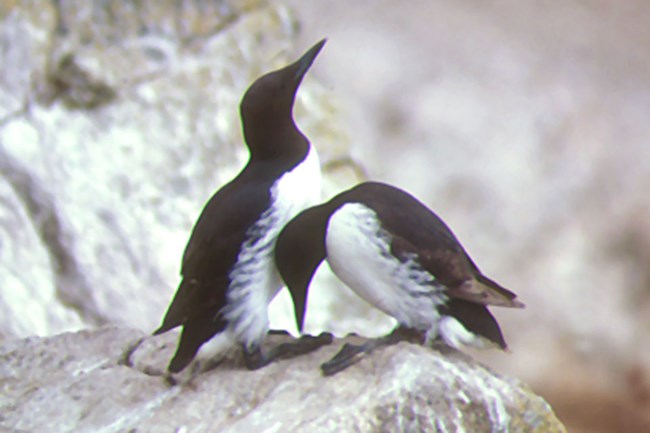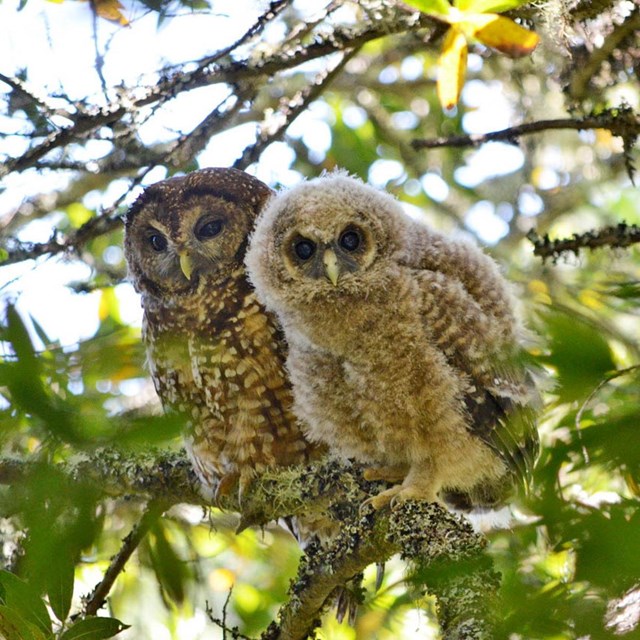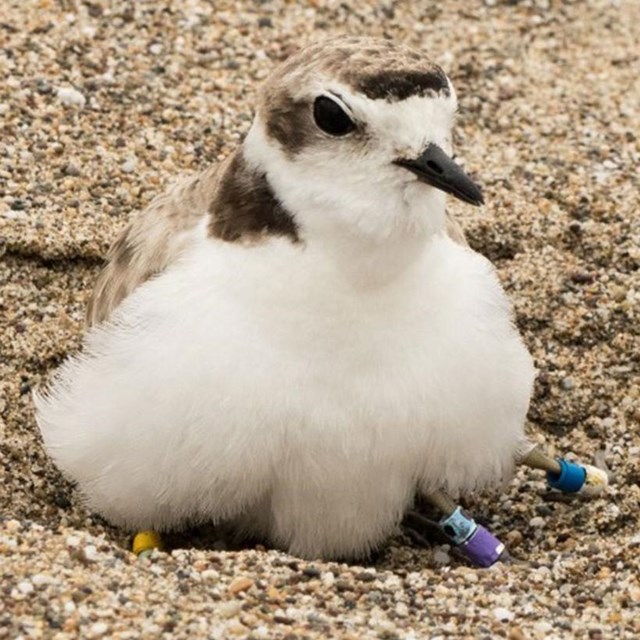The Natural Laboratory Podcast Transcript: Birds on the go: Climate change and California's feathered friends
[Introduction] This is the Natural Laboratory, a podcast exploring science for Bay Area National Parks. I'm Daniel Strain.
[Forest ambience, bird calls]
This oak forest in Point Reyes National Seashore is noisy with songbirds. But decades from now, I may hear a different set of voices at this shady spot. Some birds may be gone, while others will be new.
California's feathered friends could be on the move, scientists say. Where birders today spot oak titmice, they may soon find spotted towhees. The culprit may be climate change.
[Interview with Diana Stralberg] Diana Stralberg: What we looked at was community change and, specifically, how different might future communities be from current communities. So, as species move independently, they kind of reshuffle.
Daniel Strain: Diana Stralberg is an ecologist with PRBO Conservation Science, a conservation research group based in Marin County, California, just north of San Francisco. If global temperatures continue to climb, she worries that many birds will have to leave their old homes to find new ones.
Stralberg and a team of researchers combined climate change forecasts with survey data from 60 flyers common in California to predict where these birds of tomorrow might live. The red-capped acorn woodpecker, for instance, may trek North, while the rust-colored California towhee pushes west toward the coast. Despite appearances, the woodpecker and towhee aren't fleeing the heat…at least directly.
Stralberg: A lot of people have looked at wintering ranges of birds and tracked that they're moving North as the climate gets warmer, but for these Californian birds during the breeding season, we're really assuming that it's vegetation that the birds are responding to.
[Forest sounds, stream]
Strain: For centuries, this oak forest thrived in the stable climate of coastal California. But as the region warms, these oaks may begin to inch North, following what's left of the state's cool weather. Dry-weather scrub plants like chamise will take their place. According to Stralberg's predictions, which extend to 2070, a wide range of plant communities could undergo similar shifts. For vulnerable habitats like redwood forests, which depend on chilly, wet air, these shifts could be drastic.
Stralberg: You would expect to see more scrub or more hardwood or more oak where there's now conifer, so that's a shift in the North Bay region.
Strain: And as redwood trees go, so go all the animals that depend on them for food and shelter. Birds are just one piece of this mass migration, Stralberg says.
With so many species on the go, some may never find their just-right spot. East from Point Reyes in California's Central Valley lives one such unlucky Goldilocks, the yellow-billed magpie. As the valley becomes a pressure cooker, this bird, distinguished by the big beak that gives it its name, will fly west, she predicts. There it will sit along a sliver of mountain foothills with the climate too dry for comfort on one side and too wet on the other.
Stralberg: It's been hit by a lot of other issues, particularly West Nile virus, recently. And so that would be one species of concern because it is endemic and is found nowhere else.
Strain: In the coming decades, at-risk species like this will need to keep moving to keep up with rapid fluxes in climate. But in a climate of equally rapid human growth, many won't be able to move at all.
Stralberg: The thing that we're concerned about is there is going to be a lot of moving around on the landscape when we're manipulating that same landscape so much through urban, suburban and rural residential development.
[Cars driving by]
Strain: Cars zip past Stralberg's office in Petaluma, California with ease, but to tree seedlings and crawling beetles, the city is a treacherous obstacle course. Without trees to nest in and insects to eat, even the most mobile bird species may become grounded.
Stralberg: So, if it's not climate change, it's urban development. And sometimes it's both.
Strain: Protecting birds and their communities means giving them a little elbow room, Stralberg says. Big parks like Point Reyes have room to spare, but in urban areas, many land managers have turned to habitat corridors. These corridors are strips of grassland, woodland or marsh that bisect towns like Petaluma, providing plants and animals with a safe path through the concrete.
Stralberg: Especially in California, where we have this double whammy of urban expansion and climate change, I think the best thing we can do is to embrace smart growth.
[Conclusion]
[Wetland ambience] Beside Stralberg's office, next to the zipping cars, sits Shollenberger Park. In this swath of wetland, red-winged blackbirds lounge on fence posts, while geese and egrets wallow in a pond. Many are making quick pit-stops as they wind their way down the Petaluma River.
The voices here are different here than those back in Point Reyes, but they're equally boisterous. If Californians cut down on office parks and embrace more wild channels like this, Stralberg hopes the rest of the state will stay just as noisy.
For the Pacific Coast Science and Learning Center, I'm Daniel Strain.




